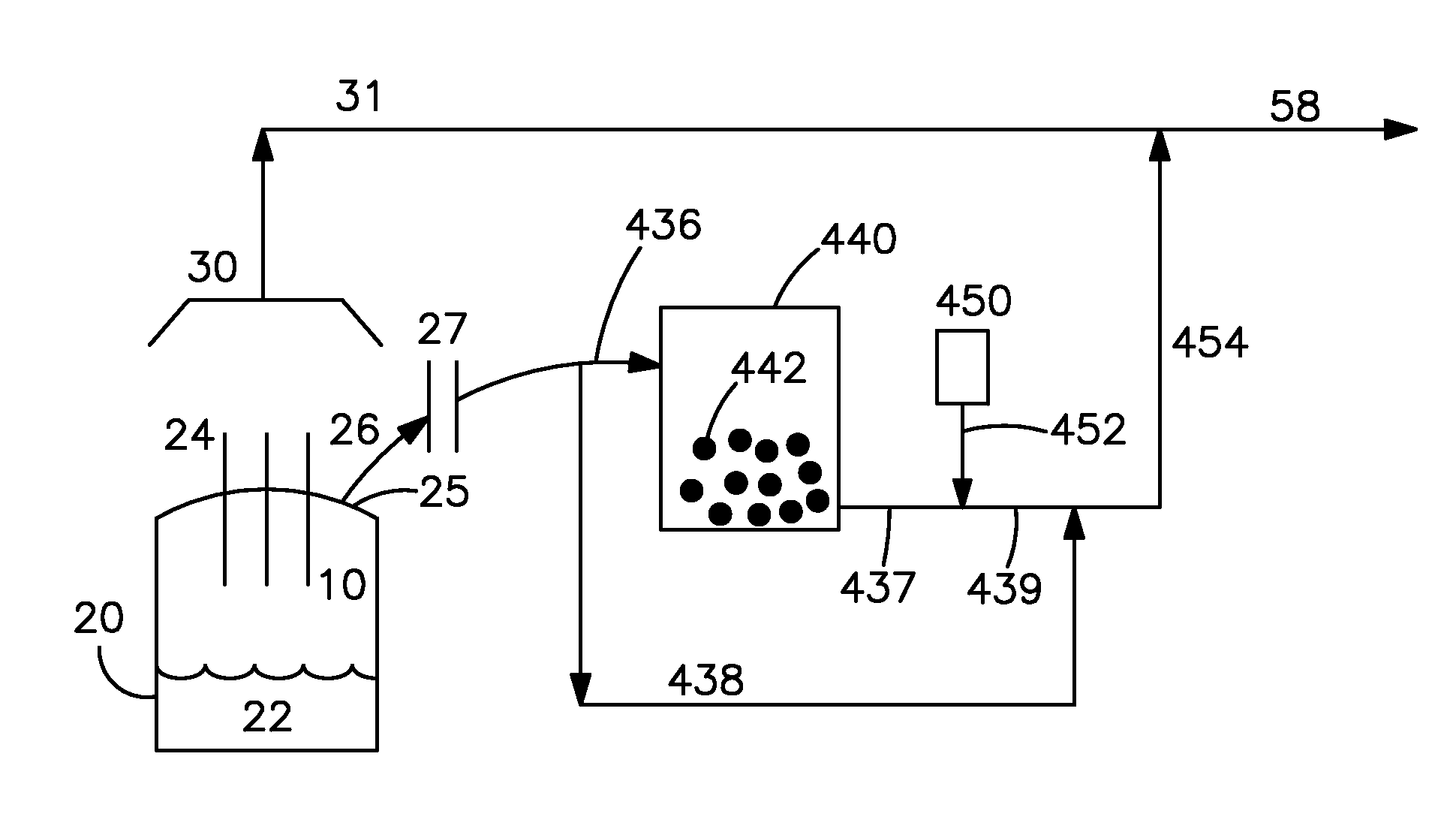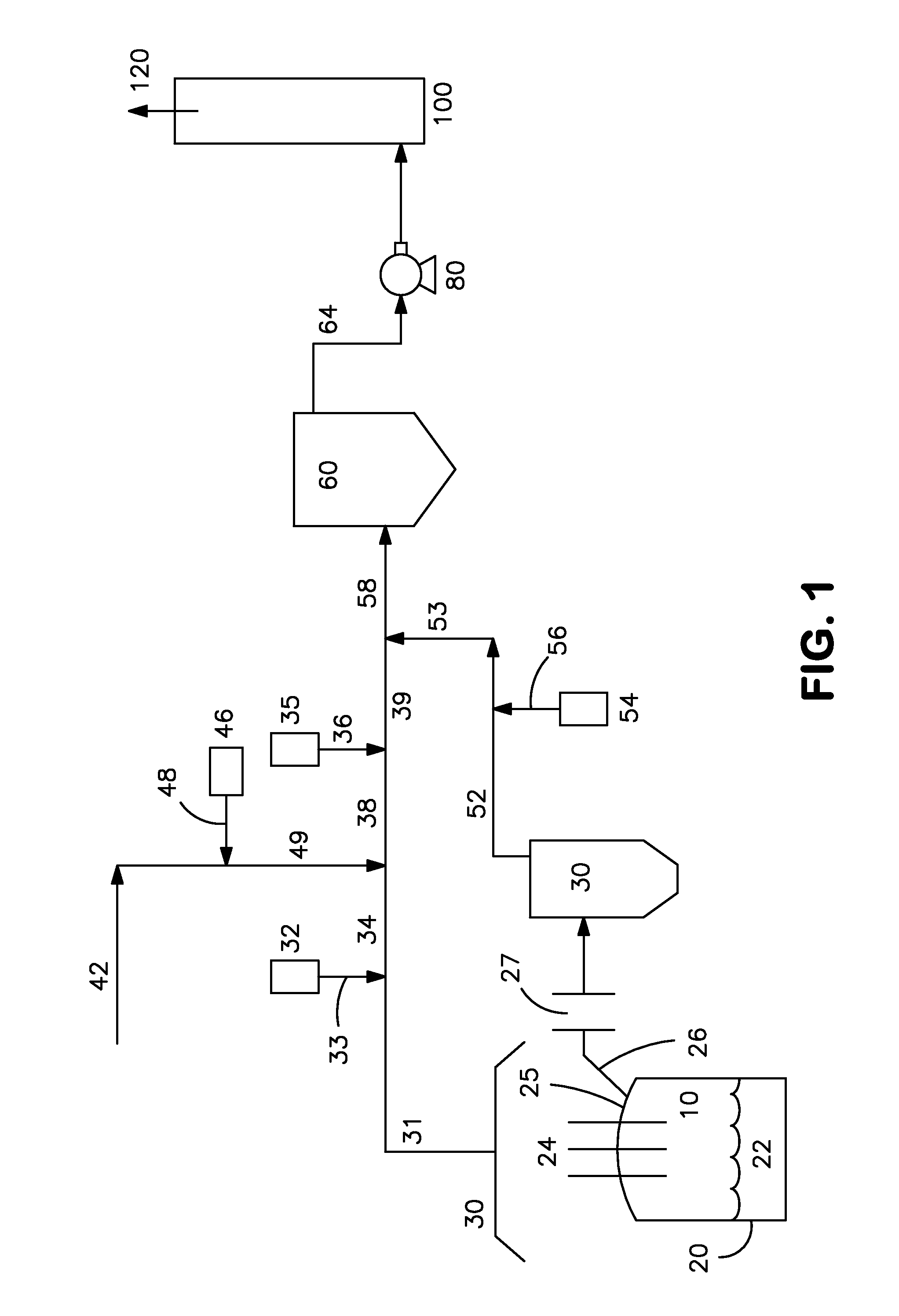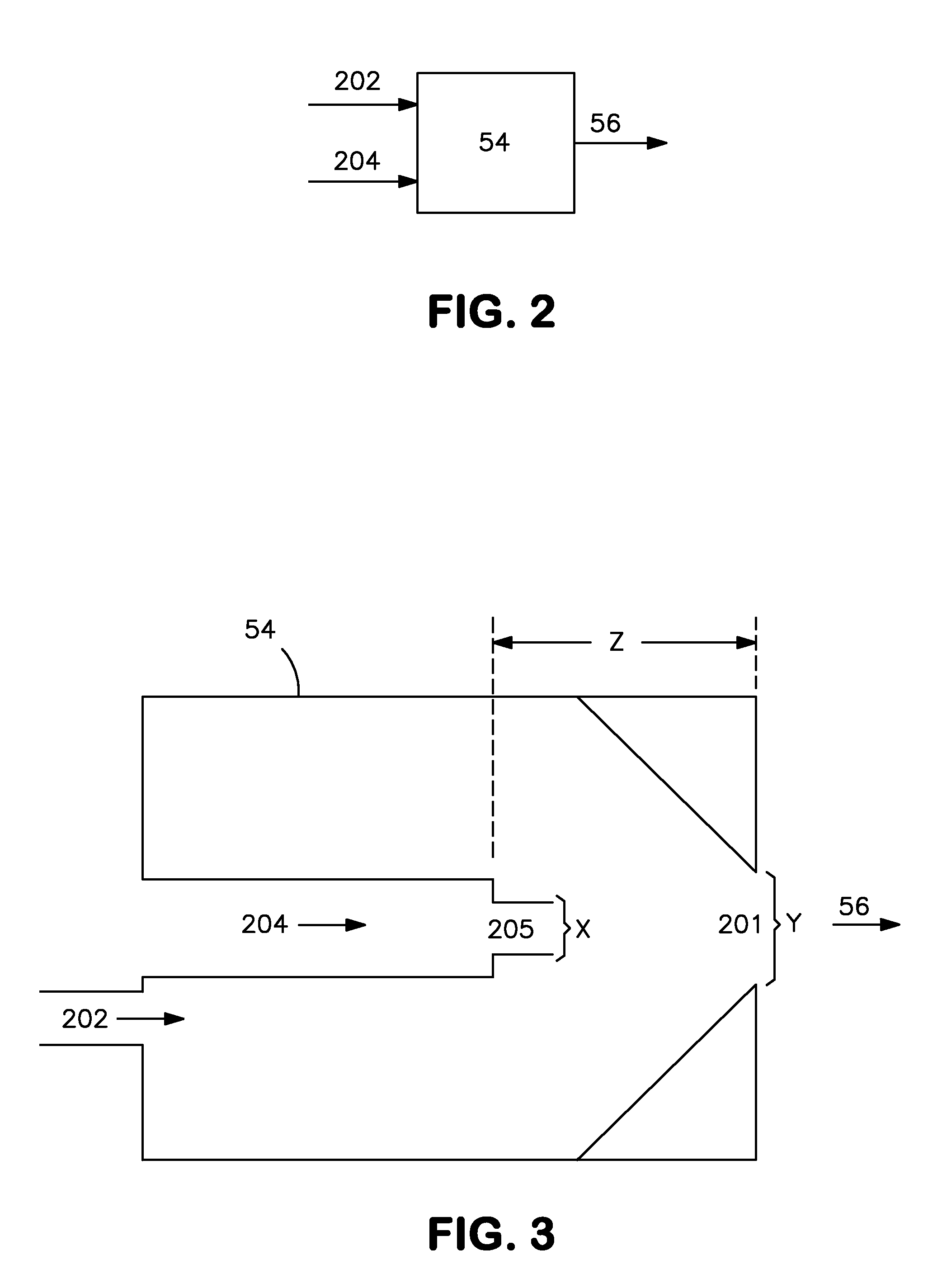Combustion of co and combustibles in steel furnace offgases
a technology of steel furnace and offgas, which is applied in the direction of furnace, separation process, manufacturing converter, etc., can solve the problems of eaf operators still operating problems, small amounts of co in the off-gas (called “co slip”), and the inability to recover other combustibles, etc., to achieve jet momentum, reduce the effect of low concentration level and enhancing the ability of radicals
- Summary
- Abstract
- Description
- Claims
- Application Information
AI Technical Summary
Benefits of technology
Problems solved by technology
Method used
Image
Examples
Embodiment Construction
[0022]While the following description of the present invention refers to the Figures, the invention is not to be considered to be confined to the embodiments illustrated in the Figures.
[0023]FIG. 1 illustrates several different possible applications of this invention to control CO emissions from steelmaking furnaces. Any one or more of these applications can be practiced, separately or as an overall system for controlling CO emissions.
[0024]Referring to FIG. 1, offgas 10 is generated in an electric arc furnace (“EAF”) 20 which has electrodes 24 over molten steel 22. While three electrodes 24 are shown, other numbers of electrodes can be employed, and the EAF can be operated with alternating current or direct current. The offgas stream 10 flows through an outlet (sometimes referred to as a “4th hole”) 25 into a conduit (or duct) 26, and then through air gap 27 which is an opening in duct 26 through which air from the surrounding atmosphere can enter into duct 26. Air is admitted into...
PUM
| Property | Measurement | Unit |
|---|---|---|
| velocity | aaaaa | aaaaa |
| velocity | aaaaa | aaaaa |
| pressure | aaaaa | aaaaa |
Abstract
Description
Claims
Application Information
 Login to View More
Login to View More - R&D
- Intellectual Property
- Life Sciences
- Materials
- Tech Scout
- Unparalleled Data Quality
- Higher Quality Content
- 60% Fewer Hallucinations
Browse by: Latest US Patents, China's latest patents, Technical Efficacy Thesaurus, Application Domain, Technology Topic, Popular Technical Reports.
© 2025 PatSnap. All rights reserved.Legal|Privacy policy|Modern Slavery Act Transparency Statement|Sitemap|About US| Contact US: help@patsnap.com



